11 Things to Do in Hakone | Hakone Guide

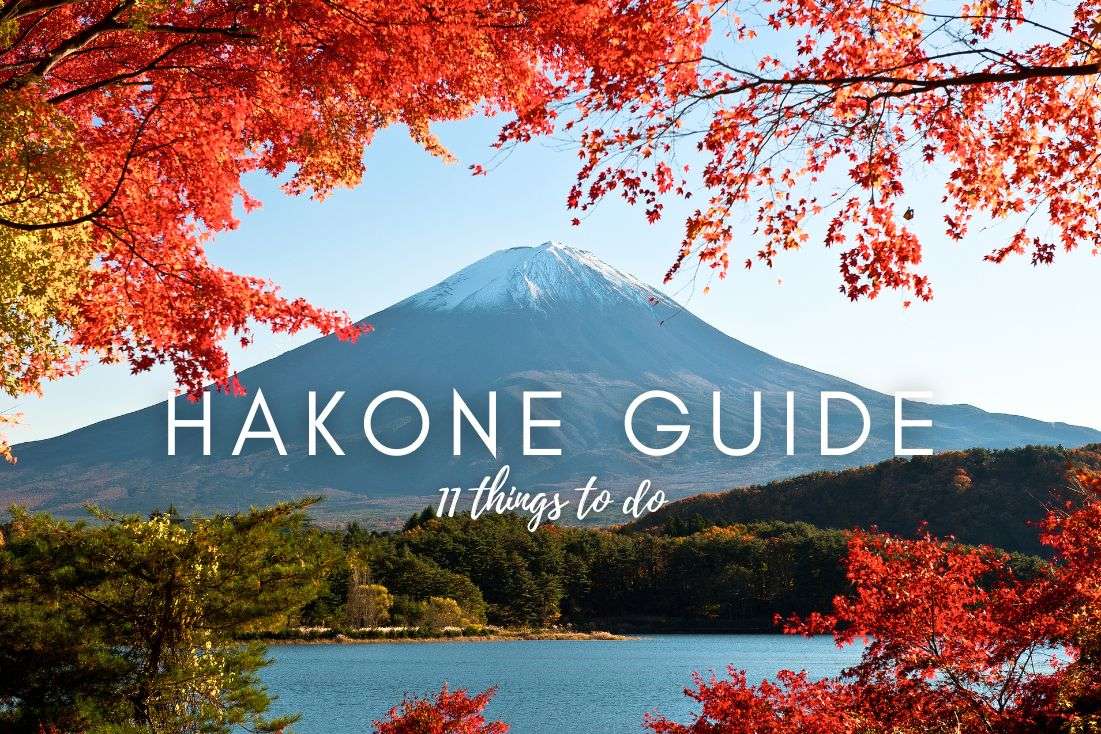
Hakone is a town that you visit mainly to see Mt. Fuji, but did you know that Hakone itself is actually sitting on a volcano?! The town is part of the Hakone caldera, which was formed by volcanic activity thousands of years ago. Today, it's a popular spot for hot springs, Mt. Fuji views, and a close-up look at volcanic activity, especially around areas like Owakudani.
Mount Fuji was, predictably, the highlight of our Hakone escapade. We were fortunate that even though we visited in the summer, which is notoriously cloudy, we got mostly clear views—though, a glance at our photos suggests "sometimes clear" might be more accurate. But just the thought of Fuji-san lurking nearby seemed to skew my perception!
For your own map of all of the attractions I’ve highlighted in Hakone and near Mt. Fuji, get my Google Maps list
More articles about Japan can be found here.
Is Hakone worth visiting?
The Hakone region is somehwhat of a unicorn—I rarely recommend a visit that’s longer than all the other travel blogs suggest. But Hakone, Fuji, and all the activities in the surrounding area deserve 2–3 full days of your time, no question. I wouldn’t visit Hakone as a day trip unless absolutely pressed for time. This is a volcanic region and it’s fascinating!
This seems like the right time to mention that if you’ve planned more than 2 days in Tokyo, you should definitely give one of those days to Hakone. Tokyo was so disappointing!
Navigating by car around Hakone is a breeze (though a slow one! I hope you like going at a snail’s pace!) and the culinary scene? Miles ahead of some other spots (*cough cough* Nikko). I'd even bet you'll stumble upon culinary hidden treasures—Tokyo Sushi, I'm eyeing you. It’s a tiny restaurant, but the sushi is one a level I’d never seen before. Then there’s Monta, where my only tip is not to order 10 of the “tapas”. They are regular serving portions and yes, we forced all of those dishes down our throats. Were we stuffed? Yes! But was it delicious? Absolutely!
Here are the best things to do in Hakone and around Mt. Fuji, based on my experience:
1. Mt. Fuji hiking! No surprise there
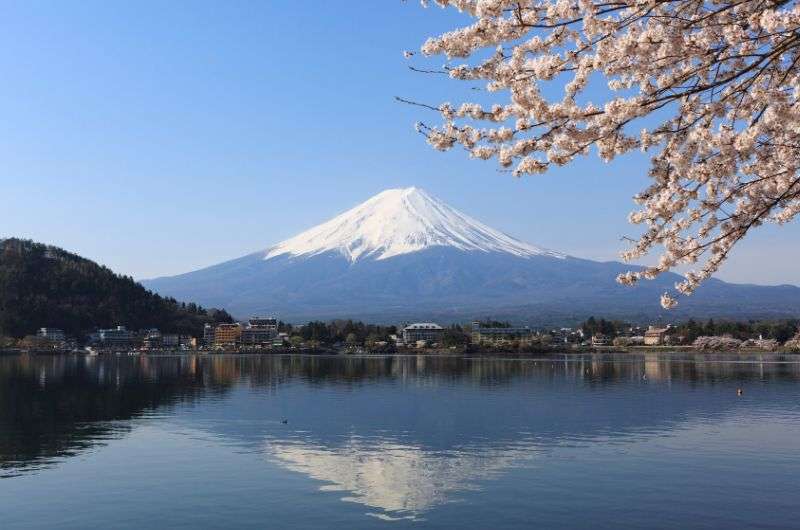
April cherry blossoms and Mt. Fuji = perfection
There are tons of things to do around Mt. Fuji, like exploring volcanic landscapes, soaking in hot springs, and gawking at shrines, but nothing beats actually setting foot on Fuji. Though if you time your trip wrong, all you’ll be doing is chasing views of Mt. Fuji—hiking season on Mt. Fuji is July and August only. So, it all depends on when you visit: Mt. Fuji in April is perfect for cherry blossom photos, winter has the clearest skies, but summer is the only time when you can safely hike Mt. Fuji.
Mt. Fuji facts: Mt. Fuji is Japan’s highest mountain at 3,776 m (12,390 ft) tall. Its almost perfectly conical shape makes it extra impressive (and very photogenic). Why is it a cone? Because it’s a volcano, of course! An active volcano, might I add. The last eruption was in 1707. About 300,000 people ascend to the summit every year.
There are 4 main trails leading up Mt. Fuji taking anywhere from 5–8 hours to ascend and up to 3 hours to descend. You can hike up and down Mt. Fuji in a single day, but many people choose to overnight in one of the huts and time their summit for sunrise the next day. The most popular and shortest trail is Yoshida Trail, accessing Mt. Fuji from the north, followed by the Fujinomiya Trail from the south. Then there are the Subashiri Trail and the longest, the Gotemba Trail.
All of these hikes start halfway up the mountain at the various so-called 5th stations. There are a total of 10 stations on each trail, with some amenities and mountain huts at most of them. If you feel like starting at the 5th station is cheating, you can certainly hike Mt. Fuji from the bottom—the traditional starting point was at Kitaguchi Hongu Fuji Sengen Shrine (details about this shrine in no. 6 below). This shrine still holds the opening and closing ceremonies for Mt. Fuji hiking season every year.
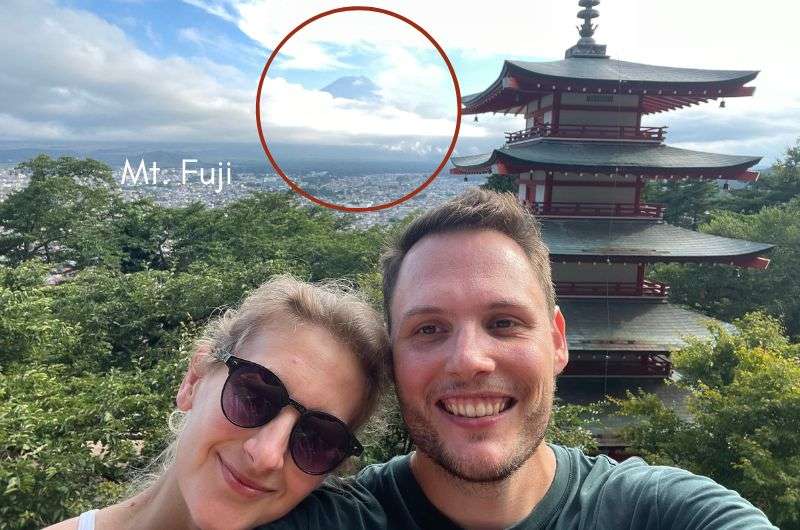
Okay, our Mt. Fuji view was a little bit obstructed, but we loved it anyway!
Is Mt. Fuji worth visiting off-season? Absolutely! I was blown away by the size of the mountain—it’s a monster! So even just catching a glimpse between the annoying clouds made my jaw drop. It was unexpected, I have to admit I wasn’t expecting Fuji to be so… massive.
If you can’t or don’t want to hike, there are still plenty of things to do around Mt. Fuji, the best of which are in this list. And just a reminder: you won’t get the best views of Mt. Fuji by actually walking on it! Check out the Mitsutoge hike in item no. 5 below to see one of the top places for views of Mt Fuji. Other activities around Mt. Fuji include:
2. Owakudani and Hakone Ropeway
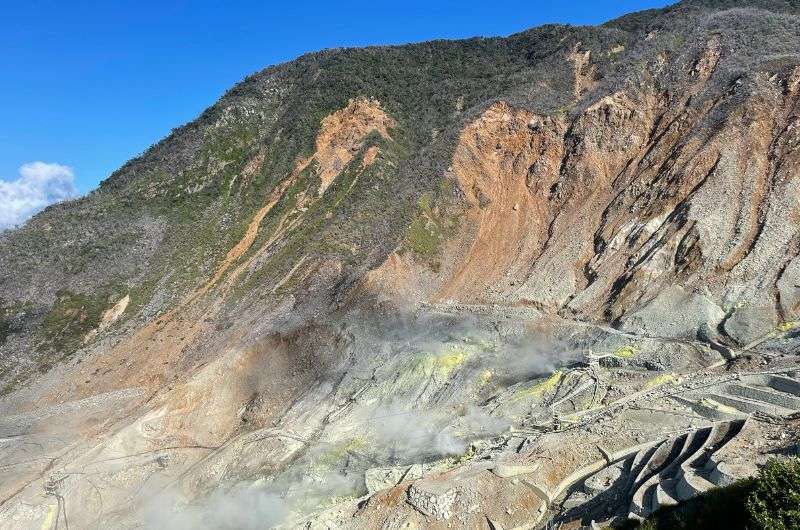
The active volcano zone Owakudani
Owakudani is an active volcano zone with all the vapors and hot steaming vents you'd expect from a place sitting on a volcano. It's a pretty cool spot if you're into seeing the Earth's power up close and personal. It wasn’t called “the Great Hell” during the Edo period for nothing!
At the top, there are trails around the best spots that’ll take you about 30 minutes to navigate, and the geomuseum was a real eye-opener. It's packed with info, mainly in Japanese, but you’ll still be able to grasp the main info. The topographic map of Hakone, showing the volcano and its caldera, was a highlight. Interestingly, after the 2015 eruption, the area turned into a bit of a dead zone for the local trees but a goldmine for us curious visitors. Less trees=more views!
There’s no escaping the sulfur at Owakaduni, but that distinctive rotten egg aroma is what you sign up for when you go exploring on volcanos, so just roll with it. It’s impossible not to notice another big tourist attraction: the black eggs. By eating one of them, you get +7 years added to your life, so chow down and I’ll see you in the future! The eggs turn black due to a chemical reaction. When they're boiled in the hot springs of Owakudani, the sulfur in the water reacts with the eggshells, causing them to turn black. The inside of the eggs remains the same, just like regular boiled eggs.
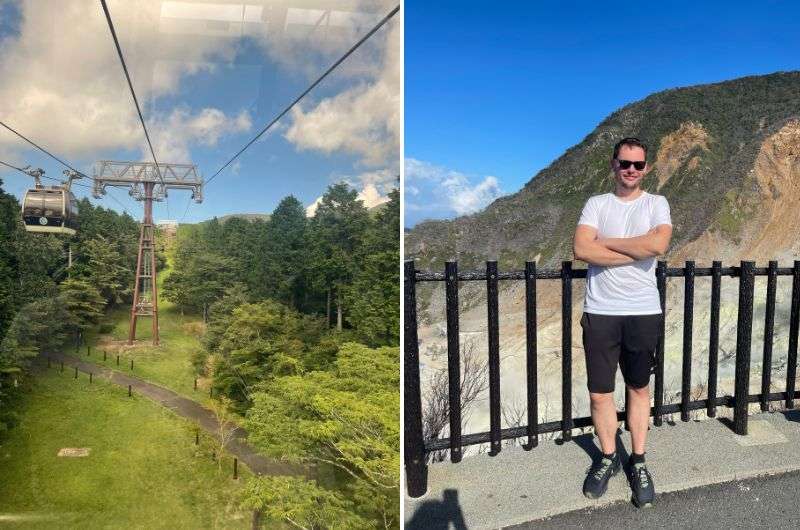
Take the Hakone ropeway and enjoy the views!
You can drive or take the Hakone ropeway (cable car) up from Togendai station (it’s the same place where the pirate boats leave from… see item 6) or Sounzan station. The ropeway is a tad expensive if you don’t have the Hakone Free Pass (tickets cost JPY 2,500) and there’s always a long wait, so come prepared to not just fly up to the top—you’ll need to earn the privilege. If you drive to Owakudani, there will be a traffic jam, so it works out almost the same.
Sure, Owakudani might not match up to the volcanic spectacles of South America or the United States, but it's the best you'll find around here.
3. Shiraito Falls and Otodome Falls
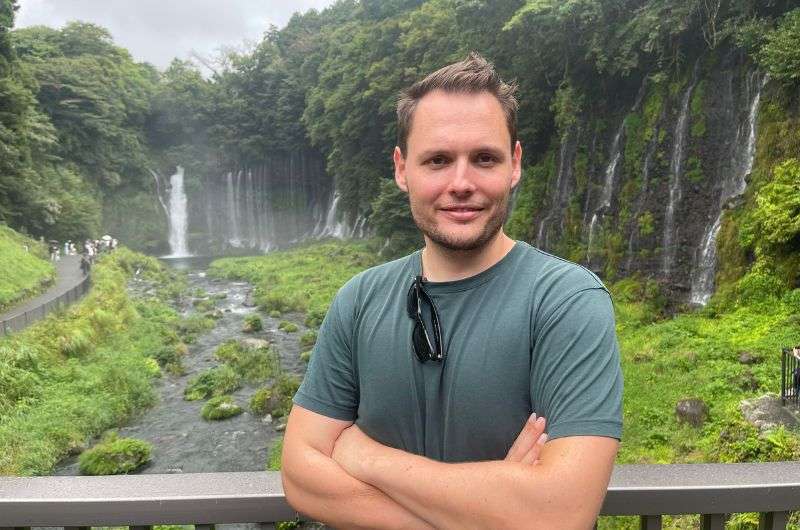
You can see a wonderful natural phenomenon in this picture! And don't forget to check out Shiraito Falls in the back...
The Shiraito and Otodome Falls are accessed from the same parking lot and together make for a lovely, short, 1-hour max stop. They’re fed by Mt. Fuji’s spring water and the snow melt following the winter. Both are very photogenic, and at Shiraito, I loved how the water just bursts out of everywhere. At Otodomi Falls, the water thunders down from 25 m (80 ft). Japan gets a lot of rainfall, which makes for some great water flow in the falls. Though Iguazu Falls it ain’t, the falls should be on any list of attractions to visit in Hakone.
The area around the waterfalls is peaceful and lush, with a steady but not overwhelming flow of other tourists on the trails to the waterfalls when we visited in the summer. And you can get amazing views of Fuji, too! Clouds permitting, of course. There are also cafes and a couple shops if you need a little break before you head on to your next stop.
When you’re planning your itinerary, make sure to take into account that Shiraito and Otodome Falls are 1 h 20 min away from Hakone, all the way at the other side of Mt. Fuji. Who am I kidding, of course I have a Hakone itinerary for you. Like I’d leave all my planning OCD go to waste.
Tip: There’s a few parking lots around the entrance to the waterfalls costing JPY 300–500 per vehicle.
4. Chureito Pagoda
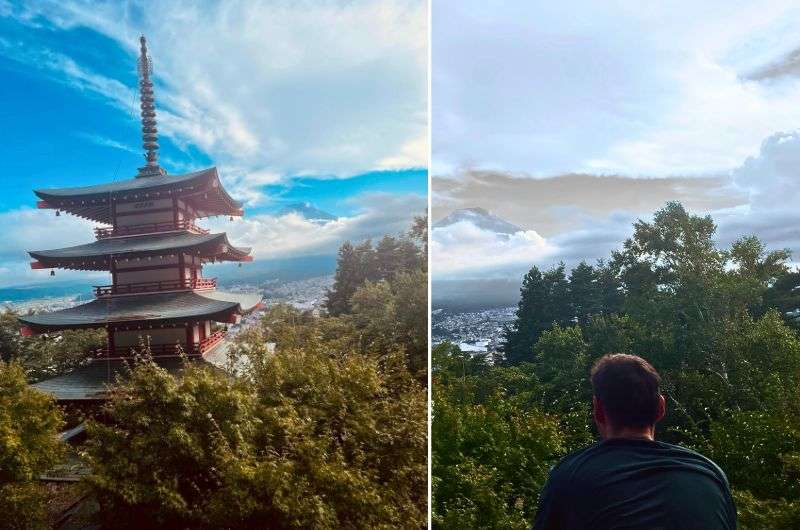
Chureito Pagoda is in all the photos and postcards with Hakone. It is the local biggest tourist attraction.
You’ve seen Chureito Pagoda plenty of times before, because it’s one of the top spots to view Mt. Fuji from and it gets snapped time after time on everyone’s trip to Japan. And even though the pagoda is nice, let’s face it, Mt. Fuji is the reason the crowds come here.
For me, an Insta-hater, Chureito Pagoda was pretty awesome despite not getting clear skies or filtered perfection. Those of you that compare real life to filtered Instagram photos might be slightly disappointed unless you’re ready to plan that perfect shot at the perfect time with perfect cloud conditions. But it’s not the pagoda, it’s you.
You need to go up about 400 stairs to get to Chureito Pagoda, which is honestly quite small and not totally mindblowing, but it’s a super nice viewpoint. It’s also too bad you don’t get the pagoda and Mt. Fuji over one of the 5 lakes—the city just isn’t as cool in the background. On the other hand, I somehow expected Fuji to be smaller than it is, but in reality, it’s a monster! Put the two together and you’ve got a winner.
As expected, this is one of the busiest places in the Mt. Fuji area, so you’ll need to be clever if you want to get that selfie without anybody else in it. We managed, but by the time it worked out, Fuji was half-covered in cloud. Oh well.
Tip: I have an entire article about Japan’s best shrines and pagodas that may come in handy. It has a section about the differences between the two and the etiquette at both. You haven't been walking through the center of torii gates, have you?
5. Mt. Mitsutoge hike
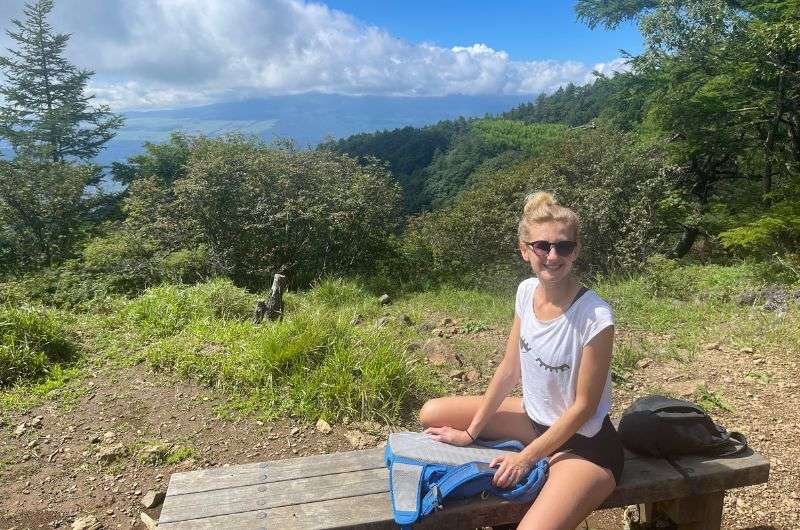
The Mitsutoge hike was lovely, though Mt. Fuji plays hide and seek with the trees and the clouds A LOT if you go in the summer
Officially, they say the Mitsutoge hike (purple trail) is a 2-hour trek, but come on, I blitzed through it in just 55 minutes! Don't expect a scenic stroll with constant views, though. Most of the time, you're engulfed by a canopy of trees, which keeps you wondering, "When's the big reveal?" And oh boy, when you finally break through to the summit, it's like the curtains are pulled back on one of the most stunning views of Fuji you'll ever see. It's so good!
There’s a cabin up top with refreshments and accommodation, a viewing platform and even a tiny shrine.
From the Mitsutoge viewpoint, you're not just treated to Mt. Fuji's iconic silhouette; you get a panoramic view that includes the Southern Alps and Misaka Mountains. You’ll see peaks like Mt. Yatsugatake and Mt. Kitadake, but let's be real–Fuji always steals the spotlight. It's like the other mountains are the backup singers to Fuji's lead vocalist.
If you're feeling adventurous, there are tougher and longer trails available too. Just make sure you know what you're signing up for—you don't want to accidentally embark on the 7-hour marathon green route unless you're really up for it (I’m joking—they start at very different spots). If you're up for a bit more of a workout than just the purple trail, consider going up one route and coming down another. We stuck with just purple, but a combination is possible.
6. Kitaguchi Hongu Fuji Sengen Shrine
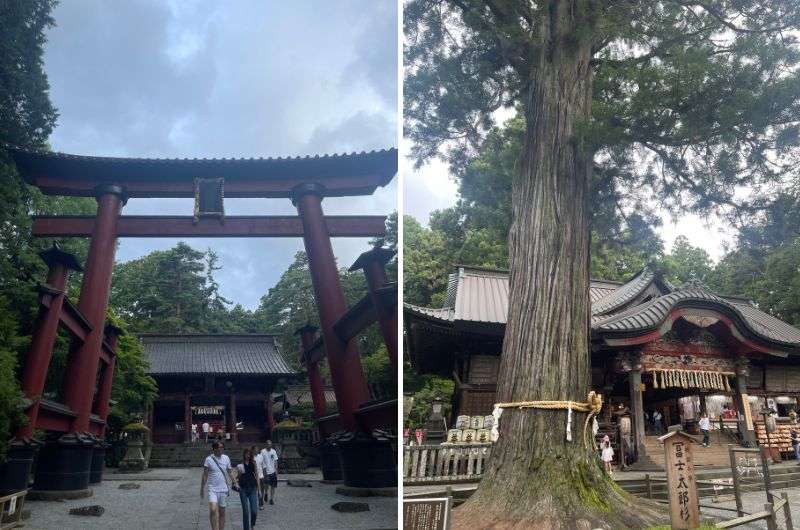
Kitaguchi Shrine
Kitaguchi Shrine was traditionally used as the starting point of the northern route up Mt. Fuji, but the excitement died down once they opened a road up to Subaru 5th Station waaaay further up the mountain. But in case you want to follow in the footsteps of ancient monks, you can still climb Fuji from Kitaguchi Shrine.
Tip: Even though nobody really climbs Mt. Fuji from Kitaguchi Shrine anymore, it is still the spot for the annual opening and closing ceremonies. On June 30th, a day ahead of the Fuji trails opening, the Kaizan-zenyasai festival is held. A parade goes from Kanadorii Park to Kitaguchi Hongu Fuji Sengen Jinja Shrine and a rope is cut to mark the beginning of hiking season. Then, on August 26th and 27th, hiking season ends with the Yoshida Fire Festival. Imagine dozens of giant, 3 m (10 ft) torches burning away into the night—I haven’t seen it myself, but I imagine it’s magical!
Kitaguchi Shrine is another place worth visiting in the Hakone area, located not far from Chureito Pagoda. Kitaguchi isn't just your run-of-the-mill shrine; it's tucked away in a gorgeous cedar grove that feels more like stepping into a scene from a fairy tale than a real-life location. Walking on the path lined by 1000-year-old cedars is like a mini-retreat from the world, and wonderfully human-less if you’re lucky!
I am utterly unspiritual, but those ropes tied around the trees—that's some classic Japanese tradition for you! Even I can appreciate that. It's like they're giving the trees a big ol' hug, saying, "You're special", haha. This is especially true for the colossal cedar at entrance to the shrine, so massive and ancient I couldn’t help but be awe-struck standing next to it.
And let's not forget the torii gate—it's huge! One of the biggest you'll find in Japan. Walking through it feels like you're entering another realm, which, in a way, I guess you are—torii gates mark the border between the secular world and the sacred world. Read more shrine FAQs in another article.
Oh, and the wooden shrine is nice too. Like, really nice, very detailed and… wooden. I almost forgot about it because of all the amazing trees.
7. Lake Ashi
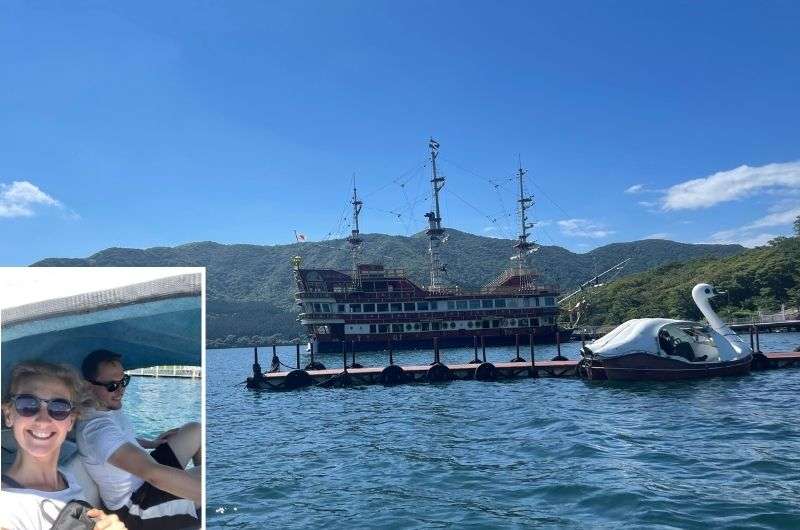
Our swan cruise on Ashi Lake, with the pirate ship tourist boat in the background
Lake Ashi is a picturesque spot with shores that are refreshingly undeveloped, except for a few quaint towns. There are boat tours, shrines, and views to be had.
Now, you'd think the pirate ships busing tourists around the lake would stick out like a sore thumb here, but hey, this is Japan, where the quirky becomes the norm! Line up early to snag a spot, especially in economy where securing a seat can feel like winning the lottery. For this reason, I’d dish out for first class (it’s not that much more expensive). It's worth every yen for the unobstructed views and the chance to snap pics without someone's head in your shots. Plus, you won’t have to fight for a seat.
For a change of pace, we went for the pedal boats. Sure, they move at a glacial pace, but it's all in good fun. Just don't plan on taking a dip in Lake Ashi. Swimming in Lake Ashi is forbidden because the water’s so chilly they fear you might get a heart attack!
Don't miss a stroll through Onshi-Hakone Park on the lake's southern edge. The gardens are immaculate and serene, and on a clear day, you might catch a glimpse of Mt. Fuji—though that's really up to the whims of the clouds. There are a couple of trails and even an observation deck, but it's a gamble whether Mount Fuji will grace you with its presence.
Other Lake Ashi highlights include the iconic but slightly underwhelming Hakone Shrine with its Heiwa no Torii on the water. Then there's the Komagatake Ropeway, whisking you up to more divine views and a shrine perched high above, offering yet another vantage point over Lake Ashi and the elusive Mt. Fuji. But more on the shrine and ropeway below—they deserve their own spotlight.
8. Komagatake Ropeway above Lake Ashi
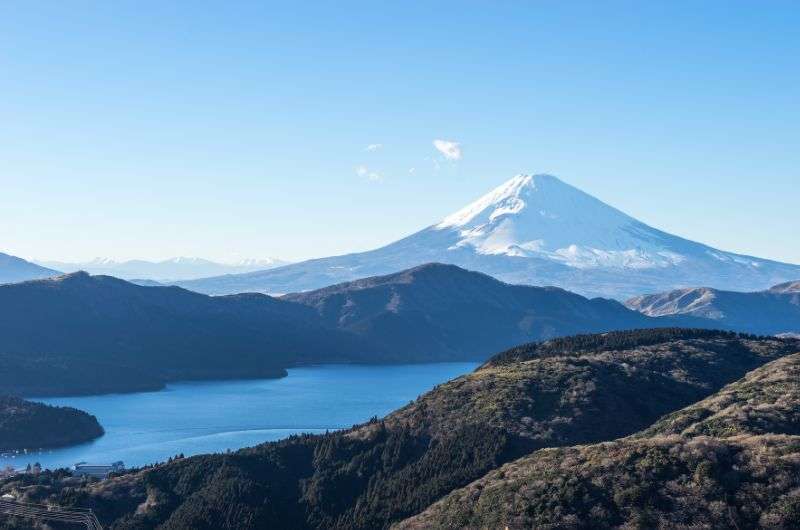
If you want to get some jaw-dropping views, take the Komagatake Ropeway
The Komagatake Ropeway offers a unique vantage point above Lake Ashi, hoisting you up through the skies for some of the most jaw-dropping views you can snag in Hakone—weather permitting. This cable car takes you to the peak of Mount Komagatake, where you can see Lake Ashi, Mt. Fuji, and, if you look in the other direction, all the way to the bay! Again, the cloud gods have to be on your side for this one, and if it isn’t a clear day, I wouldn’t bother.
We’ve already talked about the Hakone Ropeway that takes you up to Black Egg Land (Owakudani) in item no. 2 above, but this ropeway is different. In contrast to the Hakone Ropeway's smaller, more frequent gondolas that you have to wait in long lines for, the Komagatake Ropeway features a larger gondola that resembles a bus in the sky that sets off every 20 minutes and a lot of people don’t even know about it—score!
Be warned that the cable car building is awful and needs a facelift. Just turn your gaze the other direction, because it can and will hurt your eyes! That said, the views of Lake Ashi and Mt. Fuji on a clear(ish) day are superb! You know how I lamented at Chureito Pagoda that I wish the view of Mt. Fuji was over a lake instead of the city? Well, I think it’s time to petition the government to move Chureito Pagoda up to Mt. Komagatake!
There’s a short trail leading to a small shrine at the very tip of the mountain which is also quite nice. All in all a pleasant stop on your tour around Lake Ashi, one of the top attractions in Hakone.
9. Hakone Shrine
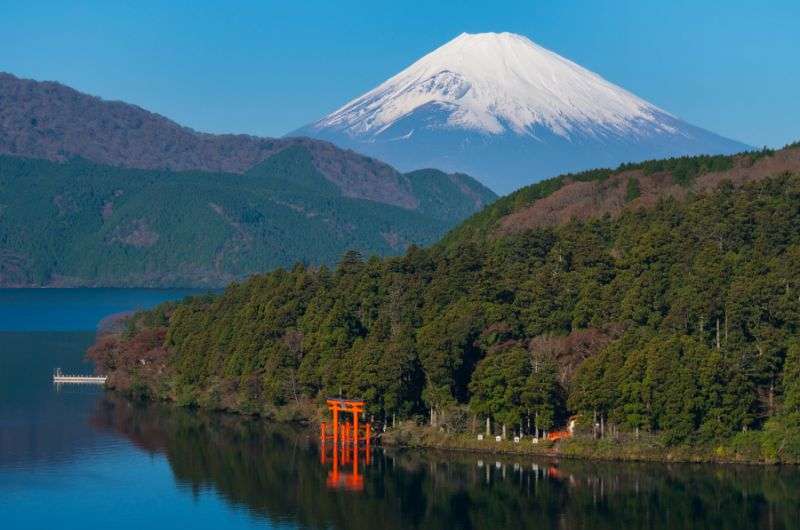
Hakone Shrine
Hakone Shrine is a serene spot tucked away in the forest near Lake Ashi. It's got a kind of mystique to it, with its lantern-lined pathways and a peaceful vibe that makes you feel like you've stepped out of time. It's one of those places where the air feels a bit thicker, charged with something ancient and revered. But…
… let's talk about Heiwa no Torii, which is supposedly an amazing torii on the water. You've probably seen it in photos, looking all majestic and isolated in the middle of the lake. So, imagine my surprise when I show up and find out it's just a stone's throw from the shore. If you threw like a girl. A bit of a letdown when you're geared up for that wow factor, and there is a line like crazy snaking back from it with people waiting to take their photo with it. We obviously passed.
That said, the shrine complex itself is definitely worth checking out. The further back up the old stairs you go, the better and more isolated it gets. Barely any of the folks taking selfies at the torii gate took a moment to really enjoy the shrine’s second and third levels, instead competing for likes on Instagram. The shrine is surrounded by stunning natural beauty, even if the torii gate is just a torii gate with wet legs. So, by all means, visit Hakone Shrine for its overall charm, but maybe dial back your expectations for anything other than that.
10. Hakone onsens with Mt. Fuji view
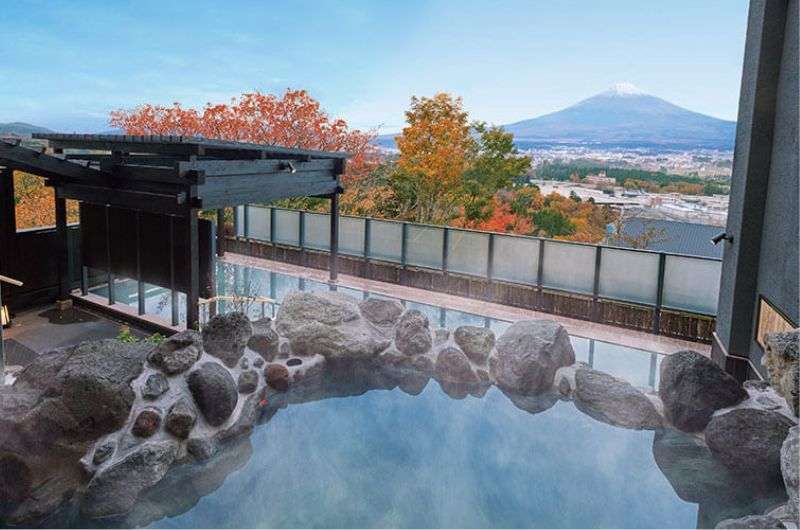
Konohananoyu onsen is amazing!
Hakone is one of the most famous onsen areas in all of Japan. Truth be told, I didn’t try any of the onsens in Hakone for one reason or another. Not a single one. But I had some on my must-do list that I’ll happily share with you now. Then you go, try them all out, and report back. Roger that?
What is an onsen? An onsen is Japan's version of a natural hot spring bath, where you soak in mineral-rich, geothermally heated waters. You strip down (yep, no swimsuits allowed), give yourself a thorough scrub, and then ease into these steaming, soothing waters. It's like a spa session, meditation, and a health boost all rolled into one, often with a killer view to boot.
Tattoo tip: If you've got some ink, do a little homework first, because tattoos are generally frowned upon in Japan (something about looking like a Yakuza member). Sure, adults can wear Pikachu costumes and have women in maid costumes bring them their coffees, but tattoos are taboo. Makes sense to me! I suggest contacting the onsen you want to visit ahead of time, or at the very least before you get naked, to make sure you won’t cause a scene.
Best Hakone onsens:
Tenzan Onsen. Tranquil, foresty area with river and small waterfall. No Fuji view, but several outdoor pools and a well-reviewd steam room. Tattoo-friendly unless you’re in a tatted group, because then you’d apparently look like a gang.
Hakone Yuryo. Another onsen with views to lush vegetation, but unfortunately no Fuji. Indoor and outdoor pools and private pool options, which is useful when you want to share a pool with the other gender.
Konohananoyu. Finally, an onsen with Mt. Fuji views, though this one has mainly private bath rooms. Not that that’s a bad thing. It’s part of Gotemba Premium Outlets, which also makes it sound semi-lame, but once you enter the onsen premises, you’re worries will literally be washed away.
If you can’t soak without views of Mt. Fuji, your best bet is to stay at a hotel with on-site onsen. Some hotels even have private baths on their balconies, with or without views of Fuji. Try these on for size: ashi
Hakone Green Plaza Hotel ($$). This hotel is sort of a mix of Japanese and western styles—you can even choose the room type—real bed or futon? Some rooms and the onsen has views of Mt Fuji—without the views, the hotel wouldn’t be worth it. It feels a bit retro if you’re optimistic and a bit dated if you’re a realist. But you asked for onsen with Mt. Fuji views, so here you go.
Ryuguden ($$$). On Lake Ashi’s shore, views of the lake and the top of Mt. Fuji from some rooms and the onsen. What more could you want? Just be careful, you could find yourself wearing the yukata all day long without even realizing it!
Hakone Reatreat Före ($$) is tucked away in the forest and gives serene, blissful hideaway vibes. They have an indoor public bath and an outdoor one that you walk on a wooden deck to. The design of this hotel is minimalist and modernly Japanese. The only thing missing is Mt. Fuji views, but unless you’re dead set on those, this place could be the perfect slice of heaven for your Hakone trip.
11. Don’t: Oshino Hakkai
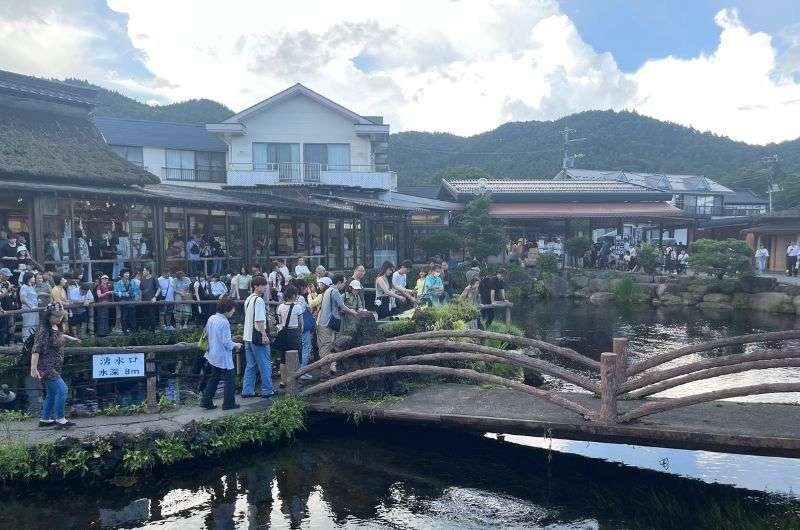
No, thank you...
I don’t know what possessed me to visit this place, but I learned my lesson the hard way and can tell you NOT to visit Oshino Hakkai. It’s a tourist trap!
I know that it can sound attractive: A series of 8 ponds full of Mt. Fuji’s melted snow, some with koi fish, with bridges and pathways throughout, complete with Mt. Fuji views and traditional thatched roof houses. Sounds lovely, right? Wrong! It’s a crowded tourist village, that’s what it is! Souvenir shops, food carts, and no wiggle room at all. It has zero authenticity and the little atmosphere it could have is ruined by the strong and steady flow of (mostly Chinese) tourists.
Next!
Oh wait, there is no next! Those were the top places I think are worth visiting in Hakone, and you can beautifully fill 2 days with them all (get my Hakone itinerary here). More if you are a serious hiker or a serious onsen soaker. For us, it was goobye Hakone and hello Kyoto for a spectacular couple of days full of shrines, bamboo forests, ninja practice, and deer that bow to you!
Hakone and Fuji FAQs
If you’re planning a trip to Hakone to visit Mt. Fuji and all of the nearby attractions, you probably have plenty of questions, some of which I’ll be so kind and answer right now. If you are READY ready, meaning you’re just about to buy your plane ticket and are just finishing up your pre-travel documents and planning, here is a Hakone itinerary for 2 days just for you. You’re welcome, I hope you enjoy it just as much as we did! And here are those FAQs you came here for:
FAQ 1: What is the best time of year to visit Mt. Fuji?
The month you choose to visit Mt. Fuji depends on what you want to do with it—hike it? Stare at it? Get a photo with Mount Fuji and the cherry blossoms? Those all require very different months of the year:
Best time to visit Mt. Fuji by month:
- For hiking: Official Mt. Fuji hiking season is between July and mid-September. Some people go up even in off-season, but mountain huts are all closed, conditions are dangerous, and rescue personnel isn’t readily available.
- For clear skies: November to February are the months with the highest chances of clear skies and best Mt. Fuji views. They are the only months where you can see Mt. Fuji all the way from Tokyo! Summer is the worst for viewing conditions, with frequent clouds (but we still got some nice peeks even in the summer). September is typhoon season, aka don’t go trying to see Fuji then.
- For cherry blossoms: Sakura trees around Mt. Fuji are typically in full bloom in first 2 weeks of April. Due to the higher altitudes, it is usually about 1 or 2 weeks later than in the lowest parts of Japan. A Cherry Blossom Festival is held annually at Chureito Pagoda, this year the dates were March 30–April 14, 2024.
- For colorful fall leaves: Visit Mt. Fuji in mid- to late November for peak colors. Another popular photo op in Japan are colorful fall leaves, especially the red maple trees. November also happens to be one of the months popular for clear skies, so it’s a win-win!
FAQ 2: Which is better Hakone or Kawaguchiko?
I was considering either Kawaguchiko or Hakone when choosing a base for exploring the Mt. Fuji area. Kawaguchiko is a resort area to the northeast of Mt. Fuji that put me off by its overpriced accommodation, leaving Hakone to win as the better-balanced option.
FAQ 3: How do I get to Hakone from Tokyo?
The best way to get from Tokyo to Hakone is by train. Hakone’s main train station is called Hakone Yumoto.
You can take a Shinkanzen (with the JR Pass) from Tokyo or Ueno Station to Odawara Station, taking about 35 zippy minutes to Odawara. Alternatively, with the Hakone Free Pass, the Odakyu Electric Railway from Shinjuku Station (the busiest train station in the world with 3.5 million passengers per day!) to Odawara Station typically takes about 85 minutes. Then you need to transfer in Odawara to Hakone Yumoto for the last 15 minutes of the journey.
If you drive from Tokyo to Hakone, it’ll take you about 1.5–2 hours.
FAQ 4: Does the Hakone Free Pass cover the Hakone Ropeway?
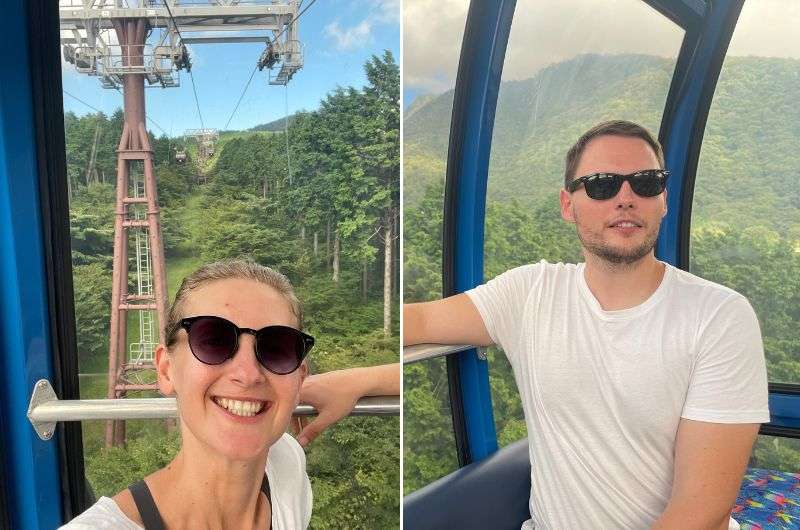
Yes it does!
The Hakone Free Pass is a must-have for anyone exploring Hakone, offering unlimited use of Odakyu-affiliated transport services within the Hakone region plus discounts at many of Hakone’s museums, restaurants, and parks. This includes free use of the Hakone Tozan Train, Hakone Ropeway, and even the sightseeing cruise on Lake Ashi.
The cost differs depending on the station you depart from. For example, a two-day pass from Shinjuku is priced JPY 6,100 per adult, while a 3-day free pass costs JPY 6,500. If you're starting your journey from Odawara, it's slightly cheaper.
You can purchase the Hakone Free Pass at major stations like Shinjuku or Odawara, or even at the Odakyu Sightseeing Service Center in Shinjuku.
FAQ 5: Should Hakone be a day trip?
I strongly advise you to give Hakone at least 2 days of your precious time in Japan. If you set out very early in the morning from Tokyo, you could, theoretically, smash most of the top Hakone + Mt. Fuji attractions into one day, but it will be a whirlwind kind of day, AND you definitely won’t have time to see it all. Forget about hiking Mt. Fuji (you need at least a whole day for that), and probably not even Mt. Mitsutoge. It’s important to realize that while distances between the highlights aren’t huge, driving speeds are super slow, and I mean snail-paced! We took an hour to drive 30 km. So if you’re going from the south shore of Lake Ashi to Kitaguchi Shrine, you’re looking at 1 hour 20 minutes, minimum!
FAQ 6: Can I see Mt. Fuji from Hakone? If so, where are the best viewing spots?
Yes! You can see the best, err, Mt. Fuji, from Hakone. Why else would I recommend you base yourself there?! The best viewing spots in Hakone are at the south shore of Lake Ashi and from Hakone Ropeway and then directly from Owakudani (among other spots). Remember this is only true of the clouds aren’t in the way. If you’re visiting in the summer months of July to September, clouds are plentiful, so keep that in mind.
This post contains affiliate links. I earn a small commission if you make bookings through my links, at no additional cost to you. Thank you for your support!



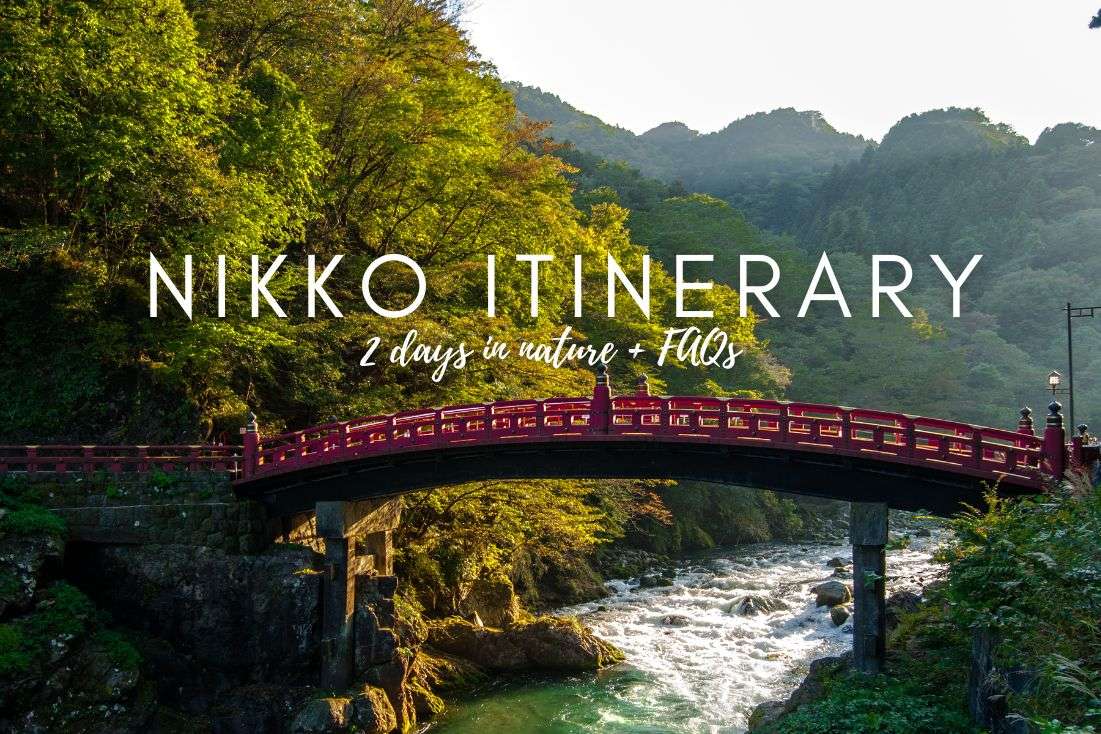
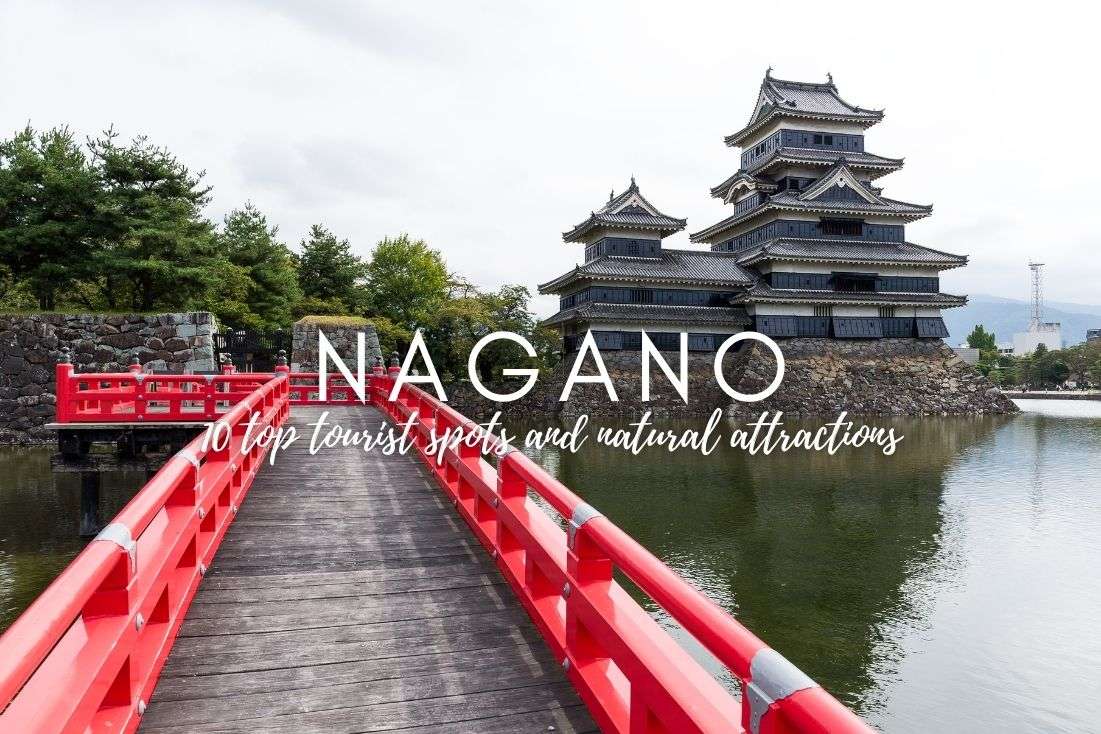






Comments | Thoughts? Give us a shout!